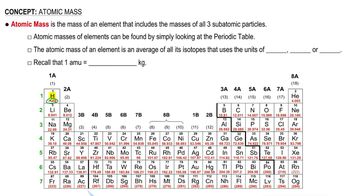Here are the essential concepts you must grasp in order to answer the question correctly.
Molecular Mass
Molecular mass is the mass of a molecule calculated as the sum of the atomic masses of all the atoms in its molecular formula. It is typically expressed in atomic mass units (amu) or grams per mole (g/mol). Understanding how to calculate molecular mass is essential for determining the composition and properties of compounds, including enzymes like nitrogenase.
Recommended video:
Percent Composition
Percent composition refers to the percentage by mass of each element in a compound. It is calculated by dividing the mass of the element in the compound by the total mass of the compound and multiplying by 100. In this question, knowing that nitrogenase is 0.0872% molybdenum by mass allows us to relate the mass of molybdenum to the total mass of the enzyme.
Recommended video:
Enzyme Structure and Function
Enzymes are biological catalysts that speed up chemical reactions in living organisms. They are typically proteins that may contain metal ions, such as molybdenum in nitrogenase, which are crucial for their catalytic activity. Understanding the role of metal ions in enzyme function is important for grasping how nitrogenase facilitates nitrogen fixation in plants.
Recommended video:
Functional Groups Example
 Verified step by step guidance
Verified step by step guidance

